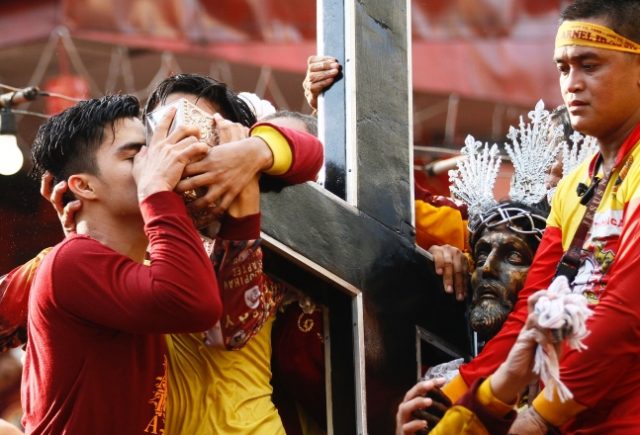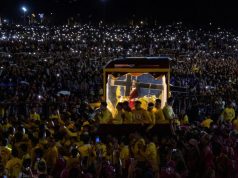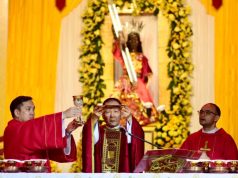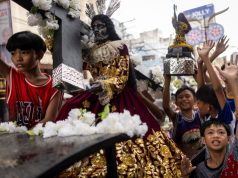
Government agencies and the Catholic faithful alike are preparing for the annual Black Nazarene parade or traslacion on January 9.
National Capital Region Police Office chief Director Guillermo Eleazar on Wednesday announced that 7,100 cops will be deployed during the security preparations for the annual procession, GMA News reported.
An estimated 2.5 million devotees will join the 2019 celebration of the traslacion, which will see the famous image of the Black Nazarene travel a 5-kilometer route around the city of Manila starting from the Quirino Grand Stand in Rizal Park and ending in Quiapo Church.
Eleazar added that mobile phone coverage in the area will be shut down and that a “No Fly Zone” and “No Sail Zone” will be implemented for the event.
“We are still studying it but the “No Fly Zone” and “No Sail Zone” are certain. We will be transmitting this request to the Department of Transportation to ensure the safety of all who will join,” he said.
The preparations for the annual Feast of the Black Nazarene, which draws millions of devotees every year, began as the daily mass leading up to the traslacion opened with the start of 2019.
Quiapo Church Rector Hernando Coronel said that they are expecting a large number of millennials or those aged 21 to 37 to attend the festivities, CNN Philippines reported.
He said that the Church plans to tap into social media to reach out to more devotees and offer live streams of the events leading up to the traslacion. 5,000 people are already expected to attend the masses before the January 9 procession.
A Facebook page for the event has started reaching out to devotees.
Changes to the entry and exit points of the “pahalik,” where the devotees are allowed to kiss the image, were previously mulled by the traslacion organizers as early as November 2018.
As the preparation for the event approaches its most crucial stage, government agencies have started assessing parts of the city where the Black Nazarene may pass through.
The Department of Public Works and Highway has announced that MacArthur Bridge which connects Quiapo to Taft Avenue in Manila may not be able to bear the weight of the structure and the massive crowd as it is currently undergoing repairs.
Annual tradition
The traslacion takes its name from the Spanish word for ‘transfer’ or ‘passage.’ Usually held on January 9 every year, devotees, typically numbering in the millions, join the procession around the city of Manila hoping for a chance to wipe their towels on the Black Nazarene. The statue is believed to be miraculous, granting good health and protection even from terminal sickness.
The Quiapo Church clergy has imposed stricter measures in recent years due to the numerous reported injuries and occasional casualties arising from the mammoth crowd every year. It has urged against senior citizens, children, pregnant women, the disabled and even intoxicated people from joining the parade.
The 2018 traslacion which lasted 22 hours drew a total of 3.5 million devotees. 1,057 patients joined the festivities, with the assistance of the Philippine Red Cross.
The Red Cross reported that more than 800 devotees were injured during the 2018 traslacion. Complaints ranged from minor medical conditions such as lacerations, headaches and dizziness to major concerns such as fainting, seizure and fractures.
Seven devotees were rushed to the hospital after suffering from possible neck and spine injuries.









